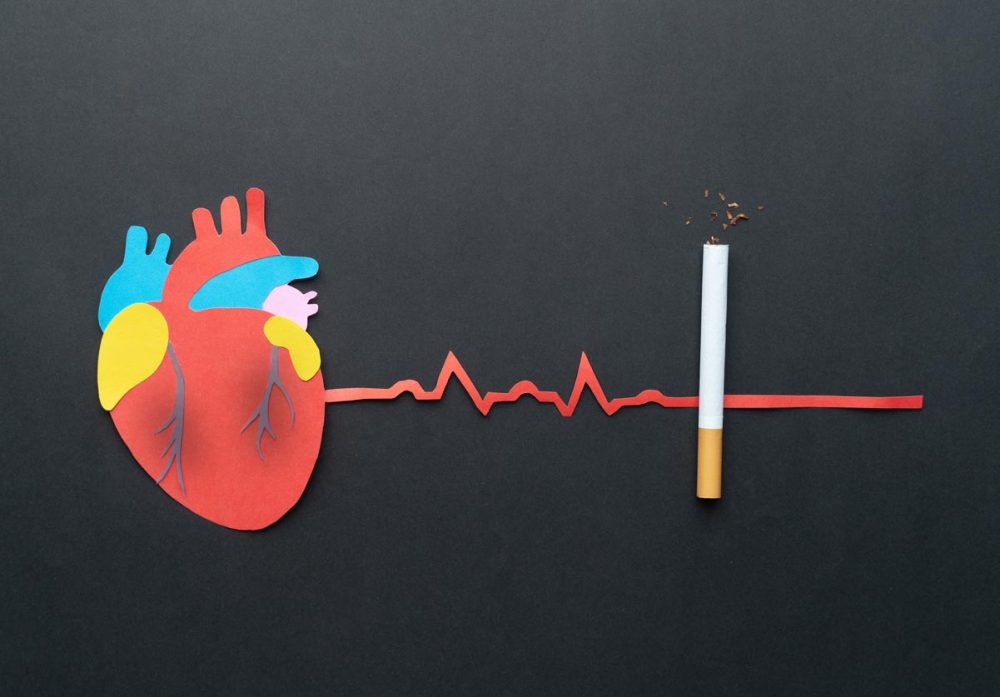Advertisment
Quitting smoking nearly halves heart attack risk, cutting down does little

According to research presented today at ESC Congress 2024, 1 patients with stable coronary artery disease who quit smoking at any timepoint after their diagnosis reduced their risk of a major event by almost 50%. In contrast, there was minimal impact on cardiovascular risk in patients who reduced their smoking habits.
The international CLARIFY registry (prospeCtive observational LongitudinAl RegIstry oF patients with stable coronary arterY disease) assessed the impact of smoking status on cardiovascular events in patients with coronary artery disease. The registry included 32,378 patients with the condition. The occurrence of a major adverse cardiovascular event (MACE), defined as cardiovascular death or myocardial infarction during the 5-year follow-up period, was analysed.
Patients were included in the study at an average of 6.5 years after their coronary artery disease diagnosis: at inclusion, 13,366 patients (41.3%) had never smoked, 14,973 (46.2%) were former smokers and 4,039 (12.5%) were current smokers. Among the former smokers who smoked at the time of coronary artery disease diagnosis, 72.8% discontinued smoking within the following year, while only 27.2% quit in subsequent years. “Interestingly, the first year after diagnosis was the crucial window for quitting. At the time of diagnosis, we should emphasise the importance of quitting and support patients in this challenge,” said study author, Dr. Jules Mesnier of Hospital Bichat-Claude Bernard, Paris, France.
Patients who quit smoking after coronary artery disease diagnosis significantly improved their cardiovascular outcomes regardless of when they quit, with a 44% reduction in the risk of MACE (adjusted hazard ratio [HR] 0.56; 95% confidence interval [CI] 0.42–0.76; p<0.001). Among smokers who reduced the amount smoked, the risk of MACE was not significantly altered compared with smokers who did not change their smoking habits (adjusted HR 0.96; 95% CI 0.74–1.26; p=0.78). The risk of MACE after a coronary artery disease diagnosis increased by 8% for each additional year of active smoking (adjusted HR 1.08; 95% CI 1.04–1.12 per year). Although smokers who quit smoking achieved a rapid significant reduction in risk of MACE compared to smokers, they never achieved the cardiovascular risk level of patients who never smoked, even after years of smoking cessation.
Dr. Mesnier concluded: “I like to tell my patients that it is never too soon or too late to stop smoking, though the sooner a patient stops, the better to lower cardiovascular risk. And it is not enough to reduce smoking. Short, clear messages are needed for smokers at every medical intervention highlighting the need to quit. Telling patients they can cut their risk of a subsequent major event or death by half – as we have shown here – is a powerful message.” Measures to promote smoking cessation include brief advice, counselling and behavioural interventions, as well as pharmacological therapy.2
References and notes
1The abstract “Trajectories in smoking habits and outcomes in patients with stable coronary artery disease” will be presented at the session ‘Epidemiology and risk factors in cardiovascular disease’, which takes place on Friday 30 August 2024 at 11:35 BST at Station 3.
2Visseren FLJ, Mach F, Smulders YM, et al. 2021 ESC Guidelines on cardiovascular disease prevention in clinical practice. Eur Heart J. 2021;42:3227–3337.





